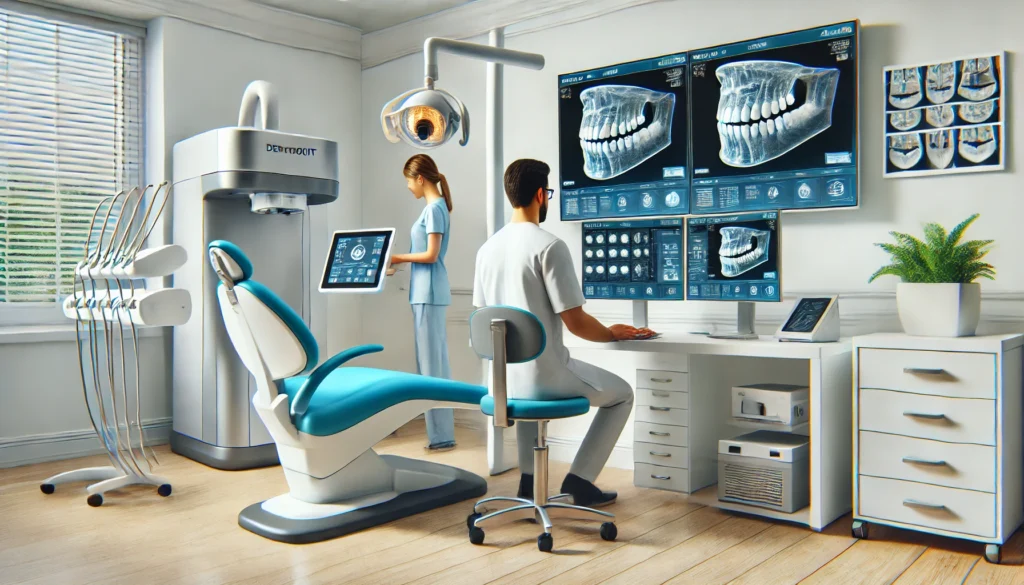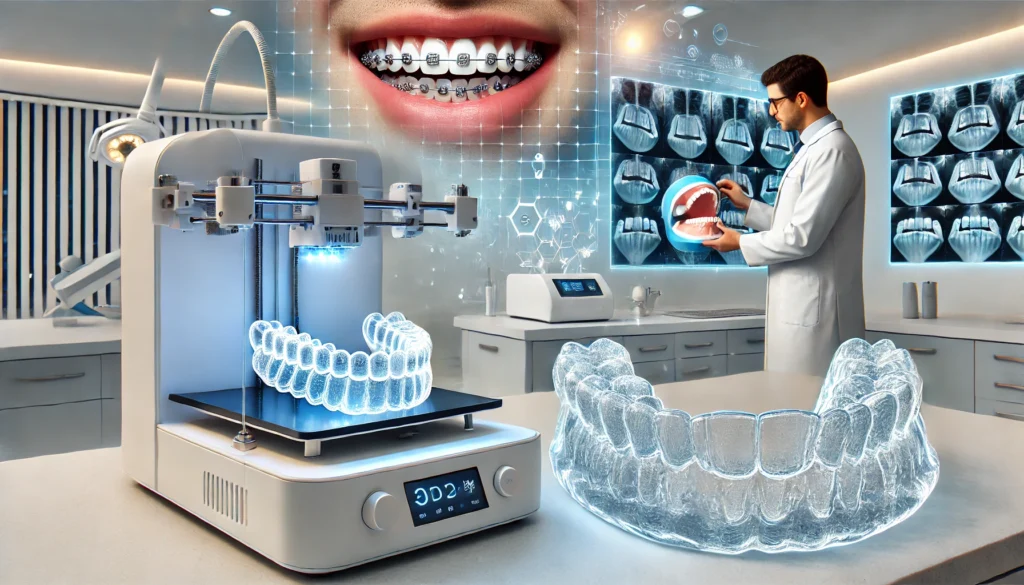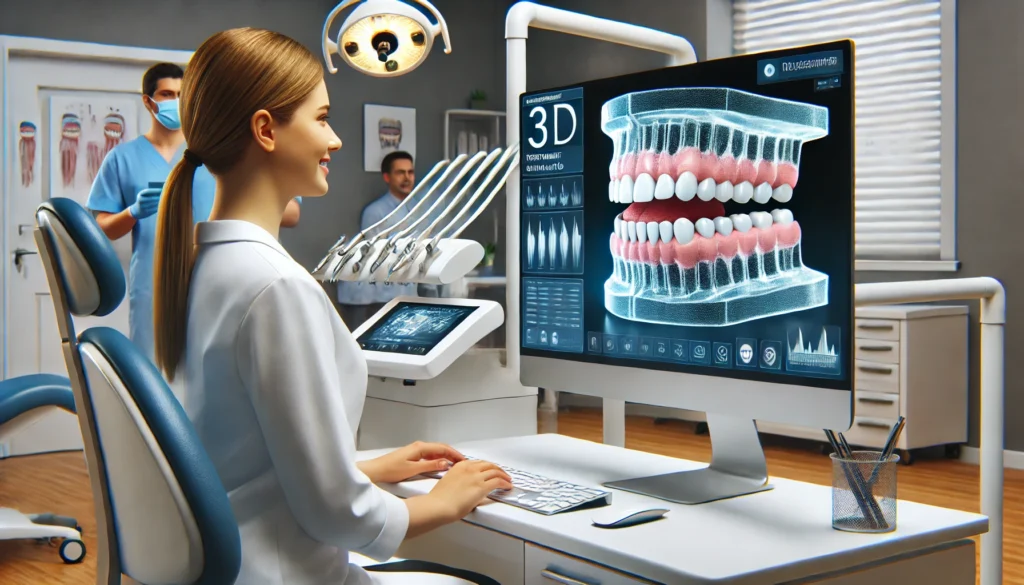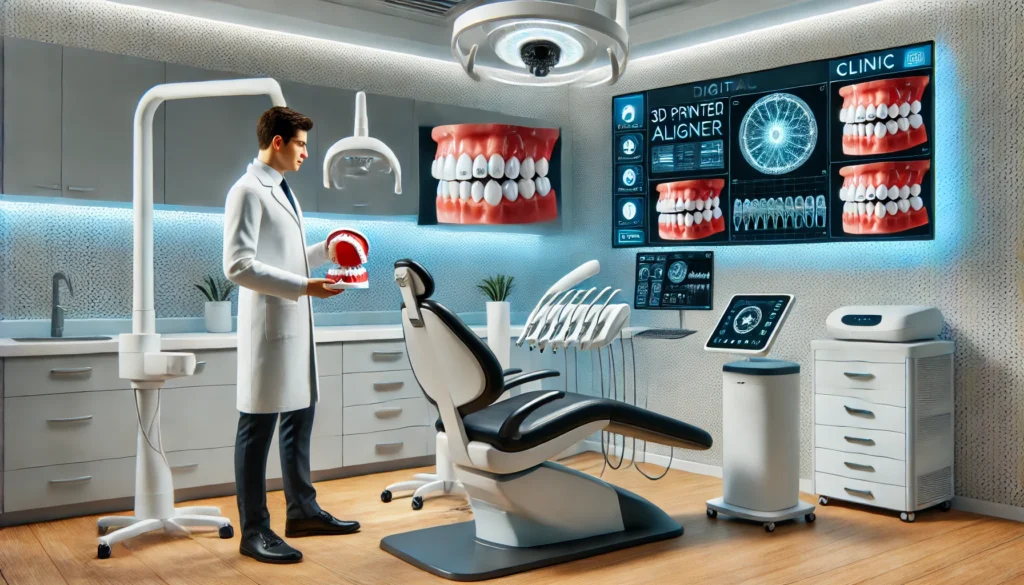This article explores the necessary technology skills for an orthodontist and highlights the crucial technologies every professional should be familiar with to succeed in their practice.

The Role of Digital Imaging in Modern Orthodontics
Digital imaging is one of an orthodontist’s most crucial technology skills. This technology allows for more transparent, precise images of a patient’s teeth, jaw, and oral health. X-rays, intraoral cameras, and 3D imaging systems are essential in diagnosis, treatment planning, and monitoring progress.
- Intraoral Cameras: These small, powerful devices help orthodontists capture detailed images of a patient’s teeth, providing a clear view of issues that might not be visible to the naked eye.
- 3D Imaging: With 3D imaging, orthodontists can better assess the jaw structure and plan treatments more precisely. These images are critical for creating clear aligners or designing braces that work optimally for the patient.
Mastering Patient Management Software
Another key necessary technology skill for an orthodontist is familiarity with patient management software. This software streamlines the administrative tasks of running a practice, such as scheduling appointments, storing patient records, and billing.
With robust patient management software, orthodontists can:
- Quickly track patient progress and update records.
- Maintain communication with patients for follow-ups.
- Manage appointment scheduling and reduce scheduling conflicts.
These tools save time and improve the patient experience by keeping everything organized and accessible.
Understanding 3D Printing Technology
3D printing has become a game-changer in orthodontics. It’s a necessary technology skill for an orthodontist because it enables the creation of customized devices, such as aligners, retainers, and models. This technology allows for faster turnaround times and highly accurate, personalized products.
- Clear Aligners: By 3D printing clear aligners, orthodontists can offer more comfortable, aesthetic, and precise treatment options for patients.
- Models for Braces: Orthodontists can also print models of a patient’s teeth, which helps plan the placement of braces and other devices.

Efficient Treatment Planning with Artificial Intelligence
Artificial intelligence (AI) is increasingly influencing the field of orthodontics. AI-driven software can analyze patient data, suggest the best treatment plans, and even simulate the effects of various orthodontic interventions. By utilizing AI, orthodontists can make better, data-driven decisions.
Using AI to analyze X-rays, CT scans, and other digital images means faster diagnosis and more accurate treatment predictions. This is a necessary technology skill for an orthodontist, as it improves the overall quality of care.
The Importance of Digital Impressions and Scanning
Gone are the days of messy impressions with dental putty. Digital impressions and scanning are now standard procedures in modern orthodontics, and mastering this technology is a necessary technology skill for an orthodontist. Digital scanners capture highly detailed impressions of a patient’s teeth, offering a more comfortable and accurate alternative to traditional moulds.
Benefits of digital impressions include:
- No discomfort for the patient.
- Increased accuracy in designing treatments such as aligners or crowns.
- Faster turnaround time compared to traditional moulds.
Teleorthodontics and Remote Monitoring
Telemedicine has extended its reach into orthodontics through teleorthodontics. Teleorthodontics refers to using digital tools to monitor patients remotely, providing more convenience and flexibility.
Patients can send photos and updates through an app, allowing orthodontists to monitor their progress between in-person visits. This technology makes it easier for patients to stay engaged in their treatment without frequent office visits and benefits those undergoing precise aligner therapy.
Digital Treatment Simulation and Visualization
Treatment simulation tools, often powered by 3D imaging and AI, allow orthodontists to show patients a virtual model of their teeth after treatment. This necessary technology skill for an orthodontist helps build trust with patients by giving them a clear vision of their treatment outcomes.
Visualizing the final result beforehand is an effective way to set expectations and increase patient satisfaction. These tools can also help orthodontists fine-tune their treatment plans for better precision.

Cloud-Based Solutions for Better Collaboration
Cloud technology has transformed how orthodontists share information and collaborate with other healthcare providers. With cloud-based solutions, orthodontists can securely store patient records, share data with dental specialists, and access treatment plans from anywhere. This enhances the continuity of care, particularly for patients who require multidisciplinary treatment.
Using cloud-based systems ensures orthodontists have the most up-to-date information, enabling smoother treatment coordination with other healthcare providers.
Mastering Communication with Patients Using Technology
Effective communication is a cornerstone of good patient care. Orthodontists who use digital tools to communicate with their patients enjoy better relationships and higher satisfaction rates. Many orthodontic practices now use apps, email, and text messaging to communicate important information, reminders, and treatment updates to patients.
By incorporating these communication technologies, orthodontists improve patient engagement, increase convenience, and reduce the risk of miscommunication.
Continuing Education and Staying Updated
The world of orthodontic technology is constantly evolving, and orthodontists must continue learning about the latest tools and techniques. Regular participation in continuing education courses, webinars, and conferences is a necessary technology skill for an orthodontist to maintain their edge in the field. Staying up-to-date ensures that orthodontists can offer the best possible care using the latest advancements.
Conclusion
As technology continues to shape the orthodontic field, having the necessary technology skills for an orthodontist has become more critical. From digital imaging and 3D printing to AI-driven treatment planning, technology helps orthodontists provide faster, more precise, and more personalized patient care.
Orthodontists who embrace these tools and stay updated on technological advancements will improve patient outcomes andand remain competitive in a rapidly evolving industry.


